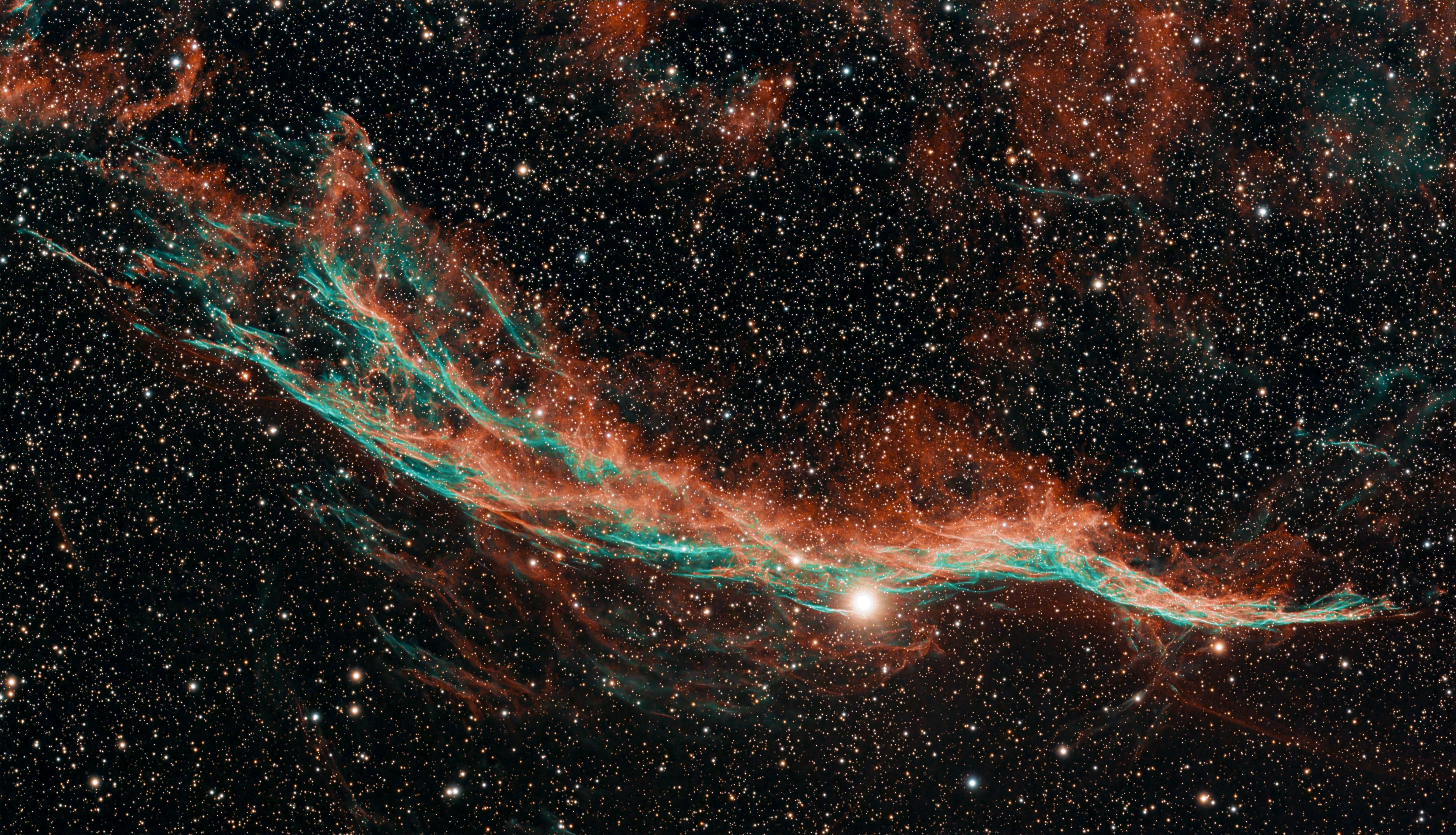The Western Veil Nebula (NGC 6960)
The Western Veil Nebula, also known as the Witches Broom, in the constellation of Cygnus is part of a larger structure known as the Cygnus Loop. All of this glowing gas is a supernova remnant from the stellar death of a massive star (some twenty times the mass of the Sun). This supernova occurred a few 10’000 years ago and the shock waves have been expanding ever since resulting in a loop (or rough sphere in 3-D) of glowing gases with a diameter of about 3 degrees on the sky. The emission is powered by collisions of atoms (collisional excitation) caused by the rapidly expanding shock front (moving at around 1.5 million km/h). The emission in the narrow spectral lines of Hydrogen-alpha and Oxygen-III make this object easy to detect using narrow band filters (such as were used here). Supernovae are among the most violent events in the Universe and briefly outshine the entire galaxy in which they occur. They also significantly restructure the galaxy, causing large holes and outflows of gas from the disks of their host galaxies. We see their effects not only within our own Milky Way, but also in distant galaxies.
This photograph was taken by Prof. Dr. Joachim Stadel in Esslingen, ZH during two nights in June 2025 using a Takahashi TOA-130 13cm refractor telescope. As part of our Bachelor study program, our students will be able to take images of such Nebulae and many other exciting objects and learn about the physical processes that create them.
